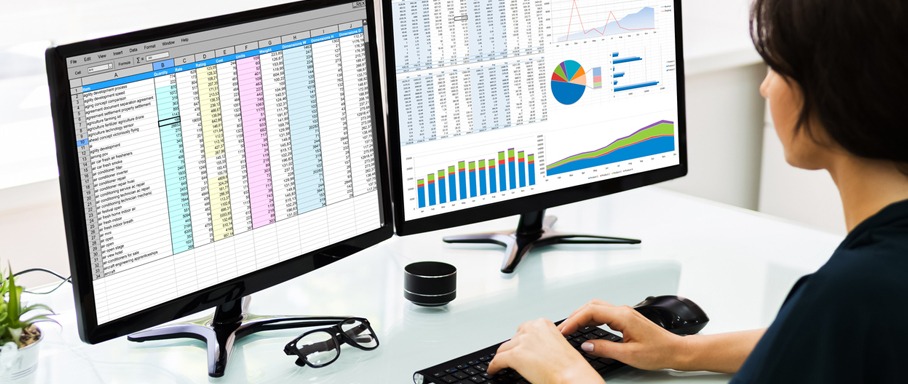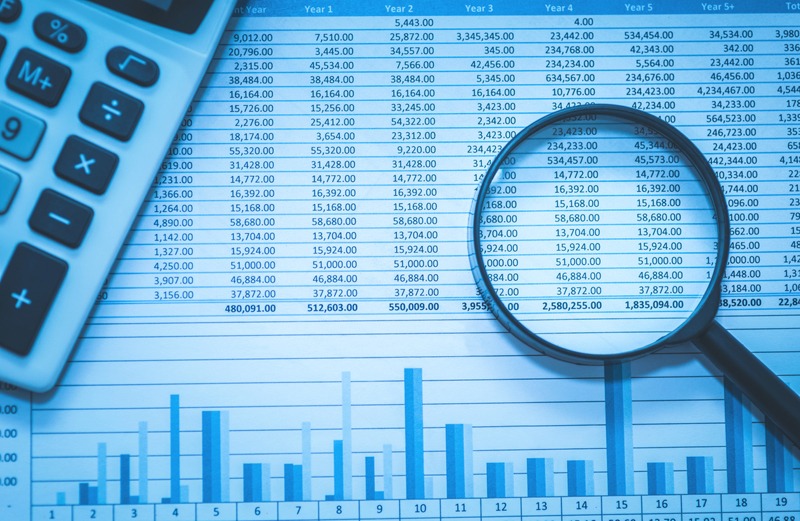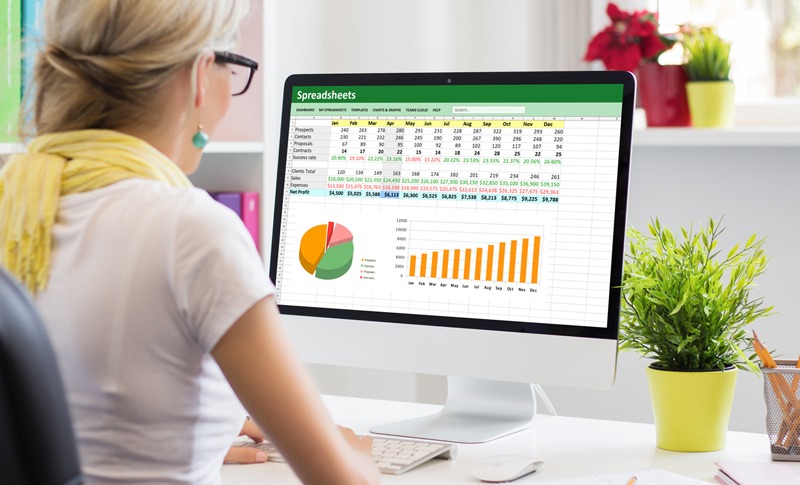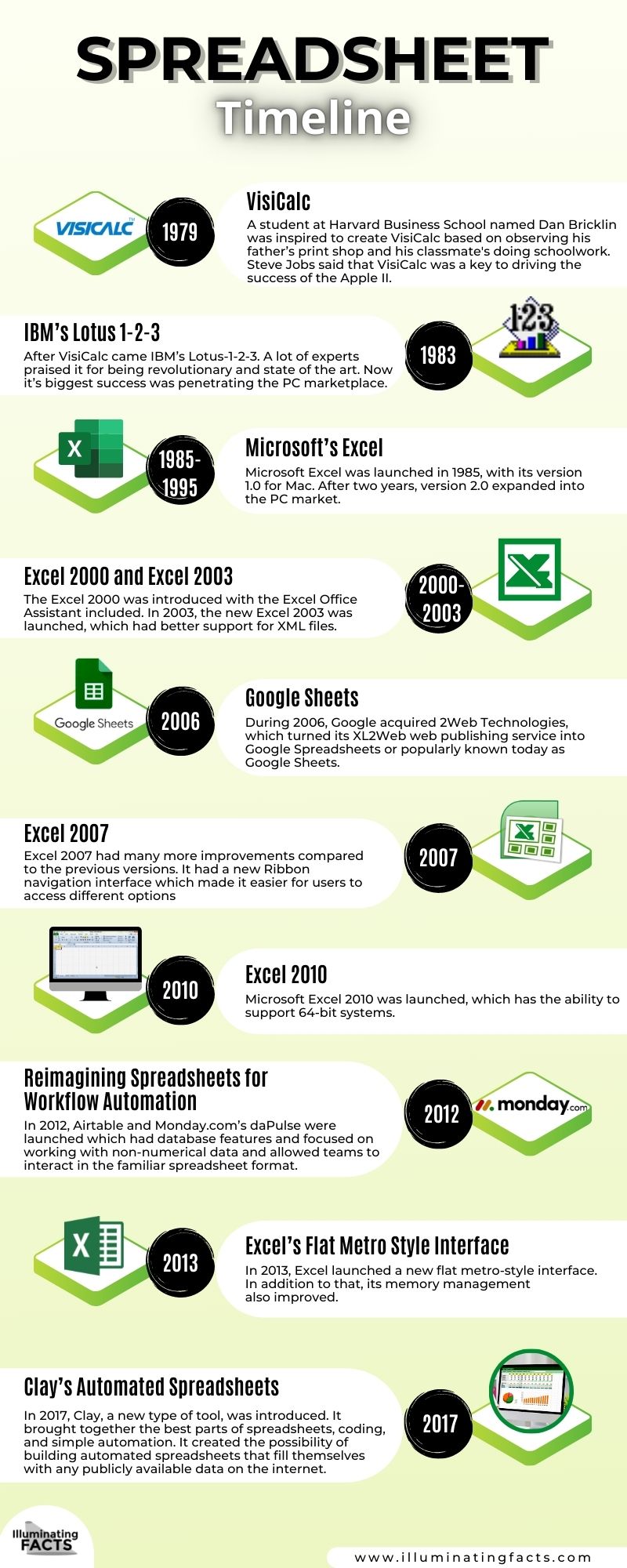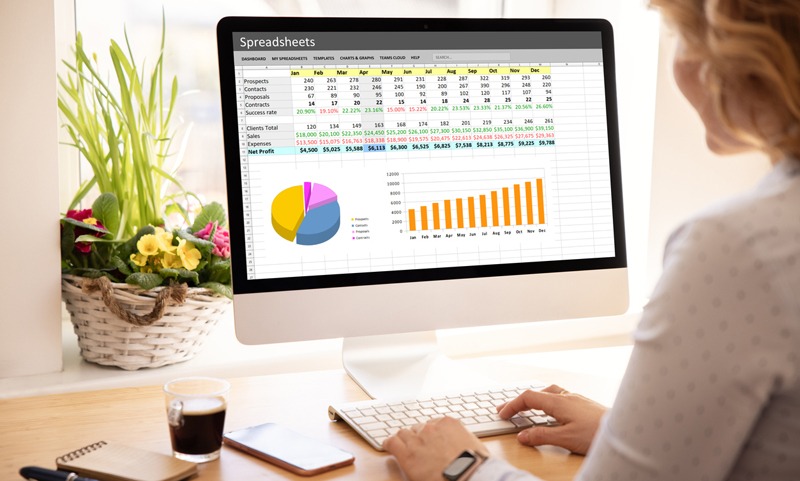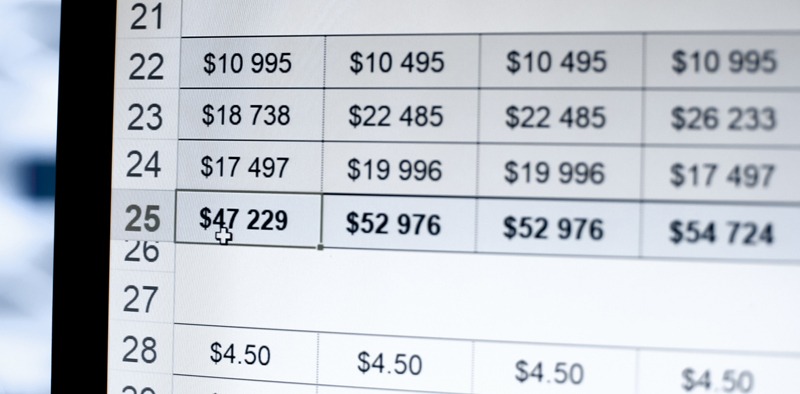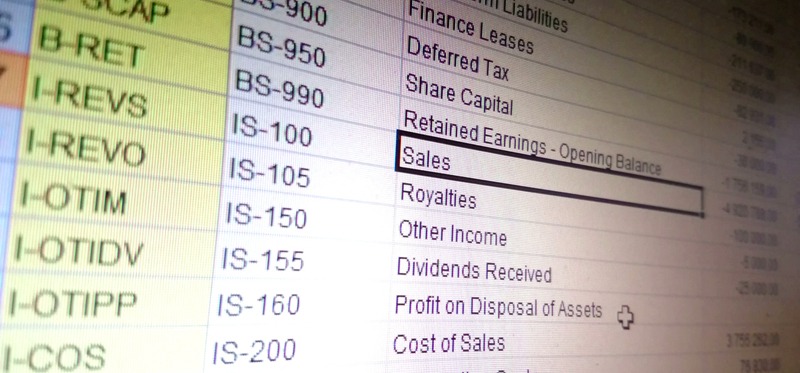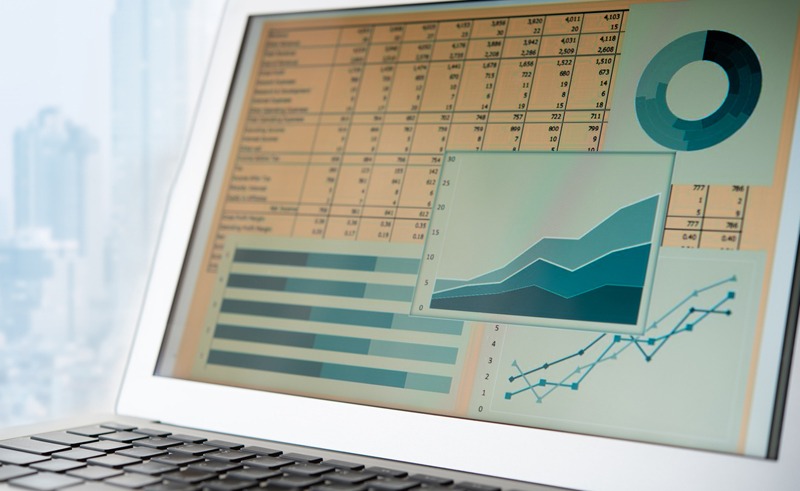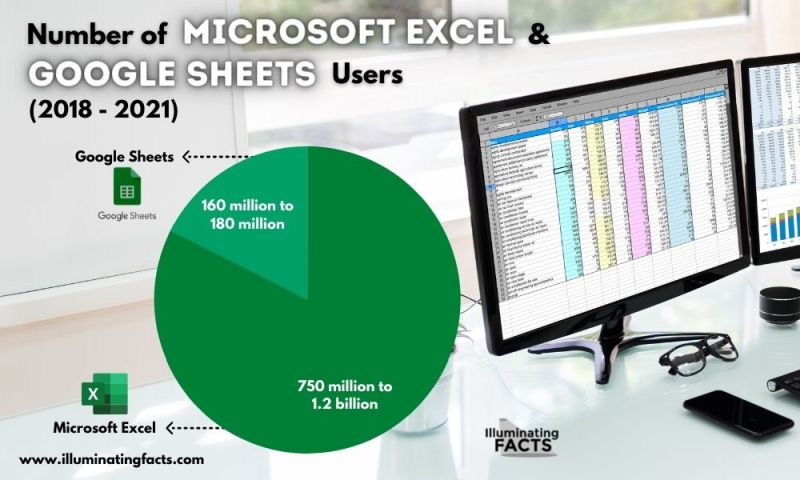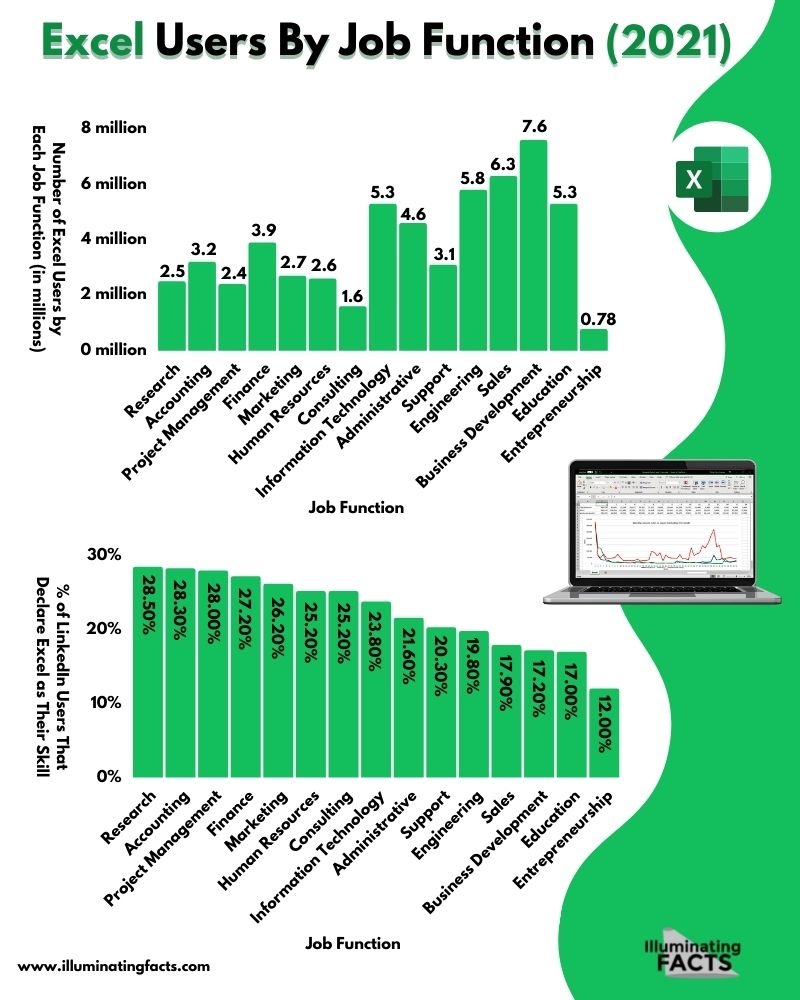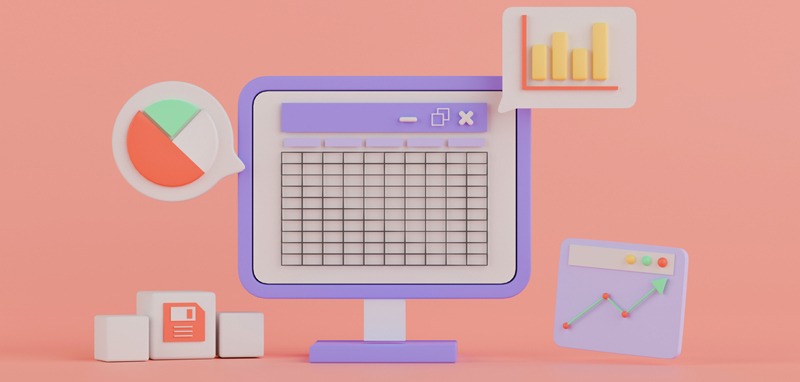Table of Contents
Background
A spreadsheet is known today as a computer application that superseded paper worksheets. They usually feature multiple cells that comprise a grid consisting of columns and rows, which contain either alphanumeric text or numeric values. Most of the time, spreadsheets are used for financial information as they can be used for automatically re-calculating the whole sheet after changing information in a single cell.
In addition to computations and calculations, there are many other things that people do when it comes to spreadsheets, such as keeping records, monitoring data, organizing information, and more. But did you know that before the spreadsheet software we know today was invented, spreadsheets had been organizing different aspects of our lives for hundreds of years?
At the present time, spreadsheets always come pre-installed with most computers and laptops. In fact, smartphones can now access them, too, both online and offline. But how did it become the spreadsheet that we know today? If you are also curious, you’re in the right place. This post will give you more information about the history of spreadsheets. In addition to that, it will also teach you the different components of a spreadsheet and its importance. For further learning, this also includes numerical data and statistics about spreadsheets that are presented in charts and graphs, as well as some interesting facts that will blow your mind.
History of Spreadsheets
In accounting, a “spread sheet” or spreadsheet was a large sheet of paper with columns and rows. They are used to organize data about transactions for a business person to scrutinize. It shows all the costs, income, taxes, and other related data on a single sheet of paper. Today, with the advancement of technology, many electronic spreadsheets are available on computers. It organizes data into software-defined columns and rows, and formulas can be used to compute the data. It also summarizes information from many paper sources in one place and presents information in a format.[1]
Spreadsheets are indeed very useful. But have you ever wondered how it started? If you have, let’s look at the history and evolution of spreadsheets.
Why Is It Called a Spreadsheet?
The term “spreadsheet” might seem strange for the younger generation as they might only know its digital version. But it is quite a literal reference to its original form hundreds of years ago. Before, a spreadsheet pertained to a ledger book full of huge sheets of paper that would be spread across the table. It is divided into rows and columns for manually entering data by using a pencil or a pen.[2] It looks something like this:
These ledger books were mainly used by accountants for different finance-related situations that involved a lot of data. It holds everything accountants need to know for them to make important decisions easily.
Where Spreadsheets Began
The first computer was created in the early 1970s along with the electronic spreadsheet software called LANPAR, which stands for LANguage for Programming Arrays at Random.[3] However, it did not gain much traction back then. Only with companies that relied on time-sharing computers, such as General Motors, Bell Canada, and AT&T.[3] Even though they could replace paper-based spreadsheets, computers back then were too expensive, big, and scarce to the public.
It was not until the late 1970s and early 1980s, when the personal computer was introduced to the market, that the online spreadsheet became successful. The very first spreadsheet program for personal computers was VisiCalc. It was created in 1979 by Dan Bricklin and Bob Frankston. It came pre-installed on the Apple II computer, creating a lot of excitement among home users. With this, many other companies followed suit, including IBM, which came up with its own product, the IBM PC.[2]
Did you know that it was the spreadsheet utility that contributed to the success of the PC market? Yes. It is one of the reasons it continued to thrive over the upcoming decades.
What’s Next?
For many, spreadsheet software on personal computers was a monumental moment. However, computers back in the early 1980s were still command-line operating machines. Even though spreadsheet programs like Multiplan, SuperCalc, and Lotus 1-2-3 were advanced enough, they still lacked the user-friendly features like many operating systems during those times.
The graphical user interface or GUI came into the picture, making handling programs like spreadsheets easier. The text-dominated features across the entire software were replaced by visual components. It transformed the user-friendly nature of the spreadsheet completely and increased its use among home users exponentially.[2]
Microsoft’s first GUI-based spreadsheet program, specifically for Macintosh, was Excel 1.0. Later on, Excel transitioned to the Windows operating system, which is the Microsoft Excel that most of us know today. Ever since, it has been the most dominant spreadsheet software.
Spreadsheet Alternatives
Microsoft Excel is very popular and has remained the ultimate spreadsheet software even today. But aside from it, there are still other notable competitor spreadsheet applications on the market, including Apple’s Numbers, which is part of the iWork productivity suite, NeoOffice spreadsheet, and WPS Spreadsheet. In addition to those, you can also find many non-proprietary, free, and open-source alternative applications, such as Calligra Sheets, Pyspread, LibreOffice Calc, and OpenOffice.org.[2]
Spreadsheets Today
Over the past few decades, spreadsheets have come a long way, and they still continue to become more intuitive, powerful, and flexible. In fact, most spreadsheet software today offers powerful analytical tools that turn data into useful insights. The most notable feature of spreadsheets is their visual representation that helps people and businesses project future developments or plans for their companies.
In addition to that, there are now cloud-based spreadsheets that are being used by many organizations. One of the most popular free cloud-based spreadsheet programs is Google Sheets, which ranks second in the world next to Microsoft’s Excel. It has transformed how businesses work as it allows online and offline collaboration anywhere, which has helped increase productivity for many people.
The latest addition in the spreadsheet world is the automation of spreadsheet processes.[2] Today, many different tools are available on the market to automate the input and analysis of data into spreadsheets. They can now be used to build and scale different complex systems via the simple connection of spreadsheets. With this kind of intelligence, almost anything is possible.
Spreadsheet Timeline
To further guide you on the history of spreadsheets, here is an informative spreadsheet timeline:
1979: VisiCalc
A student at Harvard Business School named Dan Bricklin had observed his father, a printer, endure the time-consuming process of manually redoing his prints daily. In addition to that, he also watched his classmates struggle to keep up due to their manual coursework. With this, he and another person, Bob Frankston, were inspired to create something that could help solve these issues. The result was VisiCalc, which became an instant success. In fact, back in 1984, Steve Jobs said that VisiCalc was something that drove the Apple II to its success. After VisiCalc, there were short-lived competitors that followed, which are SuperCalc and Multiplan.[3]
1983: IBM’s Lotus 1-2-3
After VisiCalc came IBM’s Lotus 1-2-3. A lot of experts praised it for being revolutionary and state of the art. However, it did not change the core format of the spreadsheet. Instead, its biggest contribution came from pushing into personal computers, which brought spreadsheets to more users, including those at home. The software competed well for several decades. For many people, Lotus 1-2-3 is the spreadsheet that defined the PC generation after running for 31 years.[3]
1985-1995: Microsoft’s Excel
Microsoft Excel was launched in 1985, with its version 1.0 for Mac. After two years, version 2.0 expanded into the PC market. But what propelled it to the limelight was the release of Microsoft Office for Windows 95. It gave Excel a presence on both home and business computers. Aside from that, it also freed spreadsheets from being tied to specific operating systems. It enabled people to download a spreadsheet from one computer and then load it on another, which started a collaboration.[3]
2000-2003: Excel 2000 and Excel 2003
The Excel 2000 was introduced with the Excel Office Assistant included. In 2003, the new Excel 2003 was launched, which had better support for XML files.[4]
2006: Google Sheets
Since Microsoft made it possible for spreadsheets to run across various operating systems, working on spreadsheets collaboratively also happened. But Google pushed this idea further by taking spreadsheets to the cloud. When 2006 came, Google acquired 2Web Technologies, which turned its XL2Web web publishing service into Google Spreadsheets or popularly known today as Google Sheets.
2007: Excel 2007
Excel 2007 had many improvements compared to the previous versions. It had a new Ribbon navigation interface, making it easier for users to access different options.[4]
2010: Excel 2010
Microsoft Excel 2010 was launched, which has the ability to support 64-bit systems.[4]
2012: Reimagining Spreadsheets for Workflow Automation
In 2012, there were two products were launched which made spreadsheets more interactive and capable of working with non-numerical data. Database features were embedded by Airtable into the spreadsheet, which allowed teams to create spreadsheets that functioned as roadmaps, bug trackers, and a lot more. The other product is Monday.com’s daPulse, which turns spreadsheets into workspaces for teams to plan, track, and deliver projects. Both of these products evolved the no-code idea behind spreadsheets with a low-code solution.
2013: Excel’s Flat Metro Style Interface
In 2013, Excel had a new flat metro-style interface. In addition to that, its memory management also improved.[4]
2017: Clay’s Automated Spreadsheets
In 2017, Clay, a new type of tool, was introduced. It brought together the best parts of spreadsheets, coding, and simple automation. It created the possibility of building automated spreadsheets that fill themselves with any publicly available data on the internet. Without using code, users could build spreadsheets that automate workflows like collecting customer data, sales prospecting, and prioritizing signups.[3]
In addition to the popular spreadsheets that most people use today, there are many more out there, both offline and online. But the ones included in this article are some of the best spreadsheets that transformed how it is utilized personally and for business.
Basic Components of a Spreadsheet
Spreadsheet programs like Microsoft Excel and Google Sheets enable users to set up text and numbers in a row and column-based interface. It also offers built-in resources for calculating and evaluating data. Each of its parts can contain, calculate, or display information. To further explain, here are the basic components of a spreadsheet.
1. Workbooks and Worksheets
In spreadsheet programs like Excel, its documents are called workbooks. In each file, individual worksheets function like the pages in a ledger. Even though you’ll hear the term “spreadsheet” used to refer to Excel documents and their pages, it also applies to the type of software itself. An Excel workbook, by default, has three worksheets.[5] But the file format can handle as many pages as your computer’s memory can handle. The workbook interface also identifies each worksheet with a named tab that can be customized to describe its contents.
2. Cells
Cells on a worksheet are found at the intersection of a row and column. One cell can have up to 32,767 characters. It depends on how you set up the data on whether a row or column shows the counterpart of a full record of information.[5] For example, each row can contain contact details for an individual member of your company. To single out and reference your data, each cell carries an address that reflects the combination of its row and column location. By default, Excel has an A1 reference style, wherein columns use letters, and rows use numbers as identifiers, which makes the first cell in a workbook “A1.”
3. Headings
In an Excel file, a user can access more than a million rows and over 16,000 columns. To identify row and column locations, headings are displayed, and prefabricated tags appear to the left and above the main data area of each worksheet.[5] When a heading is clicked, it selects the corresponding row or column of data.
4. Formula Bar
What makes spreadsheets stand out is their usefulness in calculating and combining data. In Excel and other spreadsheet software, there is the formula bar that helps users make formulas that find either the highest or lowest number in a series, display a result in another cell, and change the color of the cell’s contents or background based on the information it contains, combine text elements, and a lot more.[5]
Why are Spreadsheets Important?
Spreadsheets are among the most important business and accounting tools out there. They can vary in complexity and may be used for different reasons. However, the main purpose of spreadsheets is to categorize and organize data into a logical format. Why do you think spreadsheets are important? If you have the same question in mind, here are the purposes of using spreadsheets that make them important:
Storing Business Data
One of the easy ways to store different kinds of data is through the use of a spreadsheet. These can include customer data, product data, and financial data.[6] Most spreadsheets like Excel can support more than a million rows and thousands of columns, giving you plenty of space to store data. This is what makes spreadsheets ideal for database creation.
Calculating Data Quickly
Spreadsheets are priceless when it comes to calculating data. As you type in the numbers, and the spreadsheet can automatically do the math for you. Just ensure that you entered the functions correctly. The best advantage of doing calculations using a spreadsheet is that you only need to enter the formulas once. This is a huge time-saver, even for basic calculations. For example, if you have lots of clients who are asking for quotes on several products, all you need to do is enter your costs into the spreadsheet and add them up easily. Applying your standard markup can also help you calculate the sales tax automatically.[7]
Keeping Track of Budgeting and Spending
A spreadsheet is also utilized for keeping track of budget and spending. You can use it to make customized budgets to manage your business’ income and expenses. [6]
Graphical Visualization of Data
It is quite challenging to view data that are arranged in columns and rows. But when you use a spreadsheet, you can display information graphically with just a few clicks. These can be in the form of bar charts, pie charts, and scatter charts. This makes spreadsheets useful in times when you need to visualize the big picture in a report or as part of a presentation.[7]
Sifting and Cleanup of Data
Spreadsheets can also be used to identify inaccuracies and duplicates in data. It also makes it easy for you to remove unwanted and low-quality data. This is essential for customer data, which you need to keep accurate and up to date.[6]
Business Administrative Tasks
Spreadsheets are also used in making invoices and receipts. It can also be utilized when doing business-related forecasts and plans for the future. [6]
Sharing and Collaborating
Today, with cloud storage solutions like Apple iCloud, Google Drive, and Microsoft OneDrive, anyone in your company can help work on a project and edit spreadsheets at the same time. This makes it easy for business owners and managers to oversee their employees’ work in real-time.[7]
The use of spreadsheets comes with lots of benefits. However, like many other things, it also has drawbacks. One of the main drawbacks of spreadsheets is the human factor. It’s because it is only as good as the data and the formulas that have been entered into it. Since they are managed by humans, it is likely to have errors, too. For example, if the data you entered has the wrong decimal place, the calculations will be wrong by a factor of 10 or more. Therefore, when utilizing spreadsheets, you must be careful and double-check if all the data you’ve entered is correct.
Spreadsheet Comparison Chart
Today, you can find many different types of spreadsheet software and applications. Some of them are online, while some can be used offline. To help you compare spreadsheet programs, here is a chart and a list of the top spreadsheet software and applications you can choose from.
1. Microsoft Excel
Microsoft Excel is the best spreadsheet for advanced number crunching. It has highly customizable charts and lots of templates. It is built for manipulating data and has more than 400 distinct operations.[8] It can be used to easily insert graphs and charts for presentations. With the use of Microsoft OneDrive, collaboration is also simple and effective. However, this software is a bit daunting for some people, especially for first-time users. But when you master its functions, it can truly help with organization, computation, and data storage.
2. Google Sheets
Google Sheets is another great spreadsheet application. It is best used for simple and easy collaboration. This does not require any software as it is accessed online. It is also quite powerful when it comes to crunching numbers. Even though it is not as advanced as Excel, a lot of businesses find it useful when it comes to organizing data and performing basic operations.[8]
3. Apple Numbers
For Apple users, Numbers is one of the best spreadsheet apps out there. It comes preinstalled for free on Mac products. It features a clean and modern interface. It also loads as an infinite blank canvas that enables users to place tables wherever they want, even side by side. It is also equipped with templates that can help you execute common tasks quickly.[9] However, it lacks features like data analysis and the power to manage large data sets. But it can be synchronized across devices easily.
4. Smartsheet
If your goals include project management and team collaboration, then Smartsheet is a good choice. You can customize an existing project management template to make timelines and charts in one tool. In addition to that, it can also be utilized to monitor the status of specific tasks. It can also be integrated with other productivity-boosting applications, such as Google Suite, OneDrive, Slack, and Dropbox.[9]
5. WPS Office Spreadsheets
WPS Office is a free, small, and fast office suite that includes Spreadsheets. It is compatible with MS Office and presents a similar interface. It has a small package size, spell check, and a PDF converter. In addition to that, it also has a multi-tab interface, a paragraph adjustment tool, a drag-and-drop table feature, and more. It is a good choice for those looking for free Microsoft Office alternatives.
6. Airtable
Airtable is described by many as similar to Google Sheets but with additional features. It is complete with templates and tutorials. It also has a modern and well-designed platform that is geared to improve productivity. It offers features and templates that include a project tracker, content calendar, product planning, and a sales CRM.[9] It can be used to make pivot tables and graphs, summarize values, and other project management and collaboration features.
7. Quip Spreadsheets
Quip is a productivity tool that combines documents, spreadsheets, and team chat in one application. It features flexibility and customization. It also comes with 400 built-in functions. It can also be used to easily create a graph or chart by selecting a data range and clicking a button.[9]
Spreadsheets by the Numbers
It is quite challenging to search for numerical data and statistics in spreadsheets. It’s because industry analysts do not cover them separately and are always included in the larger “office suites” or “productivity suites” umbrella. But in this post, we did our best to put together the different data and statistics about spreadsheets.
Microsoft Excel and Google Sheets Number of Users
According to askwonder.com, around 750 to 2 billion people in the world use either Microsoft Excel or Google Sheets. Google Suite, which includes Google Sheets, is used by around 2 billion users per month. On the other hand, Microsoft has an estimated 750 million to 1.2 billion monthly users worldwide.[10]
Based on many sources online, including authoritative websites like the Harvard Business Review and Business Insider, Microsoft Office has more than 750 million active monthly users. Among the products included in the Microsoft Office, Excel is the most important consumer product based on Microsoft’s CEO Satya Nadella. In 2021, Microsoft Office will have more than 1.2 billion users worldwide, and it can be concluded that Excel has from 750 million to 1.2 billion active monthly users.[11]
Google, on the other hand, did not disclose the total number of Google Sheets users. But in 2020, G Suite boss Javier Soltero said that Google Docs had reached more than 2 billion active monthly users. However, he did not divulge how many of the 2 billion active monthly users were using Google Sheets. But based on estimates, it is possibly around 160 to 180 million Google Sheets users.[11]
Excel Users by Job Function
Among the many different spreadsheet software, Microsoft dominates the market revenue-wise. In fact, it earned $13.8 billion in 2016, which is indeed bigger than G Suite’s $1.3 billion. But revenue is not the only thing that should be looked at.[11] How about the number of users? According to Wonder, Microsoft Excel has an estimated 750 million to 1.2 billion monthly users worldwide. Recently, Senacea.co.uk studied LinkedIn on worldwide excel users by job function. You can check out the graph below for the results:
In March 2021, more than 1/6 LinkedIn users declared Excel as a skill for most job functions specific to the office and corporate environment. A large number of users are Business Development Specialists, followed by Sales Professionals, Engineers, Educators, and IT workers.[12]
However, the result is quite different when you look at how often Excel is declared as a skill among professionals of different job functions. It appears that researchers list it most frequently, followed by accountants and finance employees.[12]
Interesting Facts About Spreadsheets
If you are looking for more information about spreadsheets, here are some of the most interesting facts you should know:
- According to a study by an IT management professional at the University of Hawaii, 88% of all spreadsheets contain at least one error.
- Before spreadsheets existed in computers, they were written by hand in ledger books or on ruled sheets called analysis paper.
- There is a Japanese artist named Tatsuo Horiuchi, the Michelangelo of Excel. It’s because he uses the software’s vector tools to make digital paintings of the natural landscapes in Japan.
- Charles Simonyi was the father of Excel software.
- The original name for Excel in 1982 was Multiplan.
- World Spreadsheet Day is on October 17th, which is the date when VisiCalc was released in 1979.
- There is actually an annual Excel world championship called the Microsoft Office Specialist World Championship. It features different Excel events as part of the software giant’s yearly competition.
- One person owns a world record of 500 units of spreadsheet software. Ariel Fischman, a financial advisor from Mexico, holds the title of having the world’s largest collection of spreadsheet software since 2018.
- There are over 500 keyboard shortcuts that you can do in Excel.
- Excel is written in over 30,000,000 lines of code.
- Microsoft Excel has been the market leader for almost 30 years.
- Excel was the first application to use a toolbar.
- Mystery Guitar Man in YouTube named Joe Penna made a stop-motion animation music video using an Excel spreadsheet.
- Many people have recreated classic games like Tetris, Pacman, and more using Excel.
- An Excel spreadsheet can have up to 512 fonts, and a cell can have up to 32,767 characters.
Conclusion
Spreadsheets are indeed among the most important software or applications for companies and businesses. Instead of doing computations and data organization manually, spreadsheets can help make the task easier and faster. For some, learning how to use spreadsheets can be challenging. But once you learn more about it and master the formulas and other features, you will find that it is a very useful software that even regular people, workers, and students should learn about. We hope this post helped you learn a lot of things about spreadsheets.
References
[1] Power, D. J. (2004, August 30). A brief history of spreadsheets. Brief History of Spreadsheets, v. 3.6. Retrieved November 16, 2021, from http://www.dssresources.com/history/sshistory.html.
[2] Meikle, H. (2021, September 6). The history of spreadsheets. Sheetgo Blog. Retrieved November 16, 2021, from https://blog.sheetgo.com/spreadsheets-tips/history-of-spreadsheets/.
[3] Nashilu. (2020, December 14). An illustrated history of spreadsheets, and a glimpse of their future. Medium. Retrieved November 16, 2021, from https://medium.com/clay-test/an-illustrated-history-of-spreadsheets-and-a-glimpse-of-their-future-150819ace6a4.
[4] Decker, T. (2020, July 20). History of spreadsheets. Excel Tutorials. Retrieved November 17, 2021, from https://excel.officetuts.net/training/history-of-spreadsheets/.
[5] Mott, E. (2017, November 21). What are the main parts of a spreadsheet? Your Business. Retrieved November 17, 2021, from https://yourbusiness.azcentral.com/main-parts-spreadsheet-2724.html.
[6] LaMarco, N. (2019, March 5). What is the purpose of using a spreadsheet? Small Business – Chron.com. Retrieved November 17, 2021, from https://smallbusiness.chron.com/purpose-using-spreadsheet-54262.html.
[7] Vitez, O. (2019, February 11). What is a financial spreadsheet? Bizfluent. Retrieved November 17, 2021, from https://bizfluent.com/about-5188685-financial-spreadsheet-.html.
[8] Rigg, C. (2021, November 17). Best spreadsheet software of 2021. TechRadar. Retrieved November 18, 2021, from https://www.techradar.com/best/spreadsheet-software.
[9] Pincher, A. C. (2021, November 4). 12 best spreadsheet software options to try in 2021. The Jotform Blog. Retrieved November 18, 2021, from https://www.jotform.com/blog/best-spreadsheet-software/.
[10] N., J. (2021, February 26). Number of Google Sheets and Excel Users Worldwide. Wonder. Retrieved November 18, 2021, from https://askwonder.com/research/number-google-sheets-users-worldwide-eoskdoxav.
[11] Gislason, H. (2021, January 22). Excel vs. Google Sheets usage – nature and numbers. Medium. Retrieved November 18, 2021, from https://medium.grid.is/excel-vs-google-sheets-usage-nature-and-numbers-9dfa5d1cadbd.
[12] Sena, M. (2021, October 30). How many people use Excel? SENACEA. Retrieved November 18, 2021, from https://www.senacea.co.uk/post/excel-users-how-many.
[13] Splunk, E. (2019, June 18). 11 odd (and mildly disturbing) facts about spreadsheets. Splunk. Retrieved November 18, 2021, from https://www.splunk.com/en_us/blog/it/11-odd-and-mildly-disturbing-facts-about-spreadsheets.html.
[14] Green, A. (2021, November 9). 4 weird and wonderful facts about spreadsheets. Inspirationfeed. Retrieved November 18, 2021, from https://inspirationfeed.com/spreadsheet-facts/.
[15] Shankel, N. (2020, July 14). Interesting facts about spreadsheets. eHow UK. Retrieved November 18, 2021, from https://www.ehow.co.uk/info_8347172_interesting-spreadsheets.html.
[16] Schiffner , H. (2021, November 11). Excel facts: The most interesting fun facts for Excel users! Professor Excel. Retrieved November 18, 2021, from https://professor-excel.com/excel-facts-the-most-interesting-facts-for-every-excel-user/.

